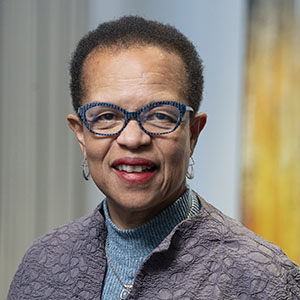This blog originally appeared on Huff Post Impact on September 3, 2013
At a college I visited recently, I read a poster where a student had described her "superpower", i.e., her strongest capability, as listening. What if that were broadly true of the social sector?
Nearly all nonprofits collect input and other kinds of data from those they serve—at a minimum, demographic information and satisfaction surveys. But some leading nonprofits are engaging clients or beneficiaries or residents—here we use the term constituents—in order to have more impact on the social concerns they are trying to address. Of course, some organizations are constituent-led—parent groups, neighborhood associations, civil rights organizations, membership groups.
Yet for many social sector organizations, constituent engagement is a challenge, as listening is a challenge for many people. While most of us understand that it makes sense to find out what people think, it is often unclear what the best strategies are for eliciting useful and timely input, much less how to take action based on it. And few can imagine involving constituents in deeper ways, like developing programs or giving constituents control of resources.
Consider Friendship Public Charter School, a $72 million charter management organization that runs six charter and five turnaround schools in Washington, D.C. and Baltimore. Like many charter organizations, Friendship initially drew upon research-based strategies to increase student achievement: longer school days, double doses of math and reading, team teaching. But by 2006, student achievement gains had flatlined, prompting Chief Operating Officer Patricia Brantley to search for new ways to get better results. Friendship ultimately decided to engage its primary constituents—students and parents—as well as teachers, to co-develop a new approach to performance management that would help them keep improving.
Friendship gathered input from its constituents to create a list of leading indicators that drive student achievement and then built a system for teachers to see this data in real-time. But, said Brantley, to "truly enable breakaway performance required making the data useful for students and parents." So teachers posted simple scorecards of classroom performance, including measures such as attendance and discipline, and offered incentives that motivated students to work together to improve.
And they taught students how to track their own data. "We expect students as young as kindergartners to be able to explain and provide evidence of their progress to their teachers, their peers, and their parents," Brantley said. Younger students might affix stars onto a paper as they learn each of five vocabulary words that are their goal for the week. Older students use indicators, such as mastery of core subjects, to figure out if they're ultimately on track for college completion. They are taught to use the data to set more ambitious goals for themselves and share progress at parent-teacher "Data Nights."
By involving students in tracking their own progress and setting their own goals, Friendship engages students and parents as partners in the design and implementation of the performance management system. Achievement at Friendship schools is moving upward again—90 percent of the schools have seen sustained gains in reading scores, math scores, and attendance—and Brantley credits these efforts as the key driver.
This kind of "co-creation" can go further, reaching into the design and delivery of programs, advocacy, and governance. Consider the example of YouthBuild, a network of 273 independent affiliates coordinated by YouthBuild USA that have worked with over 100,000 unemployed, low-income 16 to 24 year olds to build affordable housing, advance their education, and help them become community leaders. YouthBuild was founded upon the philosophy that young people must play a role in solving the challenges they and their communities face.
But how does an organization as big as YouthBuild USA turn this lofty ideal into true co-creation? For one thing, its youth participants help run the local organizations. Youth Policy Councils, with members elected by their peers, meet weekly with each site's leader to discuss issues such as program policies and staff hiring. Lots of direct service organizations have constituent advisory groups, but YouthBuild's Youth Policy Councils have actual power. For instance, they might choose among three candidates put forward for a senior staff vacancy or decide how additional funds should be spent. YouthBuild USA President Dorothy Stoneman recalled that, "I once made the mistake of not listening to the young people in a hiring decision, and it turned out they were right. The person was asked to leave the organization within six months. That was the last time I disregarded the voice of our constituents."
Reflecting on the role of constituents in an organization committed to social change, Stoneman said, "As a white participant in the civil rights movement in the sixties, I learned the importance of listening and holding myself accountable to the local community. I think constituent engagement is the big overlooked essential that today's generation of social innovators haven't been taught, haven't learned through actions, and haven't been pushed to consider by constituents, funders, and consultants."
The kind of engagement that Friendship Public Charter School and YouthBuild have with their constituents takes practice, persistence, a willingness to learn, and a recognition that constituent perspectives are not a panacea. (My colleague Matthew Forti and I provide additional examples in “From Input to Ownership: How Nonprofits Can Engage with the People They Serve to Carry Out Their Missions.”) As more organizations demonstrate effective strategies for constituent engagement, my hope is that the social sector will learn more about what approaches work best, and how engagement can better be integrated with evidence-based practices and programs.


